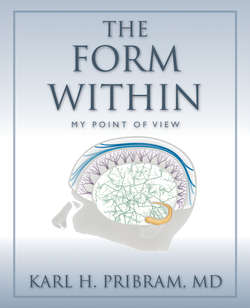Читать книгу The Form Within - Karl H Pribram - Страница 7
На сайте Литреса книга снята с продажи.
Preface The Form Within
ОглавлениеThe first thing we have to say respecting what are called new views . . . is that they are not new, but the very oldest of thoughts cast into the mold of these new times.
—Ralph Waldo Emerson, “The Transcendentalist,” 1842
A major thrust in our current changing view of humanity has been our growing understanding of what our brain does and how it does it. As always, in times of change, controversies have arisen. Not surprisingly, some of the most exciting findings, and the theories that are derived from them, are being swept under the rug. In The Form Within I have enjoyed placing these controversies within the larger context of complexity theory, framed by two ways of doing science from the time of classical Greece to the present. Within such a frame I bring to light findings that deserve our attention which are being ignored, and I clarify the reasons why they are being ignored.
Critical to any communication of our brain’s complex inner activity and its interaction with the world we navigate is the concept of “form”: The Form Within. We are in the midst of an in-form-ation revolution, begun in the latter half of the 20th century, that is superseding the Industrial Revolution of the 19th and early 20th centuries. The Industrial Revolution had created a vast upheaval through the impact of changes that occurred in our material world. The information revolution that is now under way is changing the very form, the patterns of how we navigate that world.
This revolution has many of the earmarks of the Copernican revolution of earlier times. That revolution inaugurated a series of scientific breakthroughs such as those by Galileo, Newton, Darwin and Freud. Though often unintended, all of these and related contributions shifted humans from center stage to ever more peripheral players in the scientific scenario.
The current information revolution redresses and reverses this shift: Once again science is showing that we humans must be perceived as the agents of our perceptions, the caretakers of the garden that is our earth, and how we can be actively responsible for our fellow humans. As during the Copernican revolution, the articulation of new insights is halting, often labored, and subject to revision and clarification. But the revolution is under way, and the brain and psychological sciences are playing a central role in its formulation. This orientation toward the future is what has made The Form Within so interesting to write.
This frame provides the form in which we communicate scientific research and theory. Form is the central theme of this book. Form is defined in Webster’s dictionary as “the essential nature of a thing as distinguished from its matter.” What has been lacking in the brain sciences is a science-based alternative to matter-ialism. Form provides such an alternative.
The dictionary continues its definition. “Form” forms two currents: form as shape and form as pattern. Twentieth-century brain scientists felt comfortable in their explanations using descriptions of shape but less so with descriptions of pattern. Matter has shape. Most brain scientists are materialists. By contrast, communication by way of the transmission of information is constituted of pattern. Despite paying lip service to describing brain function in terms of information processing, few classrooms and textbooks make attempts to define brain processing in the strict sense of measures of information as they are used in the communication and computational sciences. A shift from the materialism (explanations in terms of matter) of the Industrial Revolution of the 19th and early 20th centuries, to this “form-al” understanding of in-form-ation as pattern is heralding the Communications Revolution today.
But measures of information per se are not enough to convey the impressions and expressions by which we think and communicate. When the man in the street speaks of information, he is concerned with the meaning of the information. Meaning is formed by the context, the social, historical and material context within which we process the information. Thus, in The Form Within I address meaning as well as information.
The distinction between form as shape and form as pattern has many ramifications that make up the substance of the arguments and explanations I will explore throughout this book. For instance, as Descartes was declaring that there was a difference between “thinking” (as pattern) and “matter” (as shape), he was also providing us the way to trans-form shape and pattern by bringing them together within co-ordinates—what we know today as “Cartesian coordinates.”
The resolution of our question “what does the brain do and how does it do it” rests on our ability to discern, in specific instances, the transformations, the changes in coordinates, that relate our brain to its sensory and motor systems and the ways in which different systems within the brain relate to each another. The Form Within gives an account of many of these transformations, especially those that help give meaning to the way we navigate our world.
